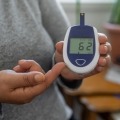New Patient Assistance Program Could Save Eversense Users $1200 Each Year
By Matthew Garza
 Ascensia Diabetes Care just launched a new Patient Assistance Program, which is now available in the US. The program aims to reduce out-of-pocket expenses for those who are starting or already using Senseonics’ Eversense 90-day implantable continuous glucose monitoring system.
Ascensia Diabetes Care just launched a new Patient Assistance Program, which is now available in the US. The program aims to reduce out-of-pocket expenses for those who are starting or already using Senseonics’ Eversense 90-day implantable continuous glucose monitoring system.
Ascensia Diabetes Care (maker of the CONTOUR blood glucose meter), in partnership with Senseonics, (the company that makes the Eversense continuous glucose monitoring system) announced this week the launch of their US Patient Assistance Program to reduce out-of-pocket costs for people with diabetes eligible for the program. The Eversense 90-day implantable continuous glucose monitor (CGM) will now become more affordable for the thousands of users living in the US.
Eligible users with commercial insurance will pay the first $100 for the device, after which the assistance program will cover up to $300 per sensor (which is replaced every three months). Any additional costs beyond that would be the system user’s responsibility. This program has the potential to save people up to $1200 a year and is available immediately for new and existing users of the Eversense CGM. Based on the press release from Ascensia, they estimate that almost half of all people using mealtime insulin in the US could be eligible for this program.
You can learn more about the program and your eligibility by filling out the form here. In addition, you can talk to your healthcare team about your options and whether or not you may be eligible for assistance.
What is the Eversense CGM?
The Eversense sensor is implanted just under the skin in your upper arm by a healthcare provider in a clinical setting. It is able to monitor your glucose values for up to 90 days (this is different from other available CGMs which often need the sensor replaced every 10 to 14 days). After this period, a visit to your healthcare provider is needed to have the sensor removed and a new one inserted.
The system itself consists of the implanted sensor, a smart transmitter that sits on top of the skin just over the sensor, and an app on the smartphone that shows your glucose values and trends throughout the day and night, as well as triggers alerts for high and low glucose levels.
The Eversense CGM eliminates the need for you to have to place a sensor through your skin to measure glucose in your interstitial fluid and its design essentially eliminates the risk of your sensor being pulled out. If the transmitter gets pulled off, you can place it back on your skin above the sensor without any harm to the sensor. The transmitter delivers on-body vibrations to alert you if your glucose values go outside your alert settings, potentially indicating dangerous swings in your glucose levels. Senseonics is currently working on gaining US approval for sensors with even longer wear-times, including 180 and 365 day sensors. The Eversense-XL, Senseonics’ 180 day sensor, is currently available in Europe.
Talk to your healthcare provider about which type of CGM may be best for managing your diabetes. Additionally, you can learn more about other options on our CGM resource page. If you’re just starting CGM for the first time, read our helpful beginner’s guide: “So You Got a CGM – Now What?”








